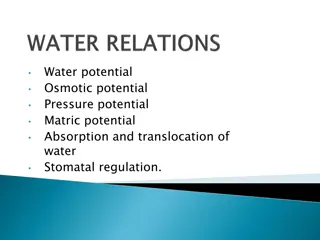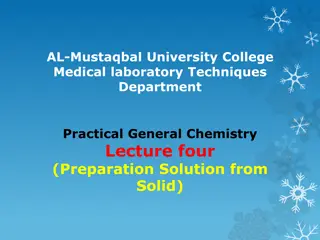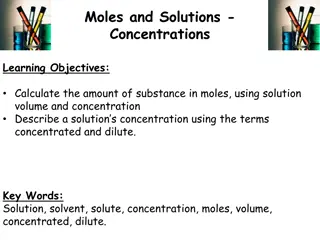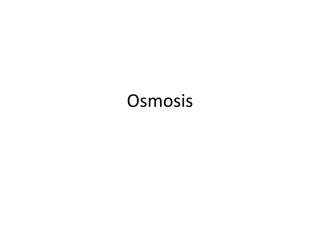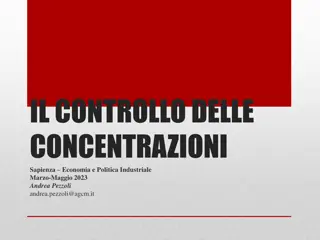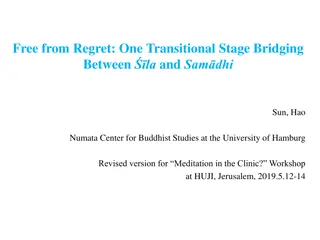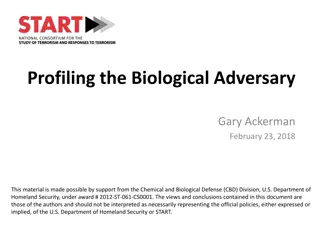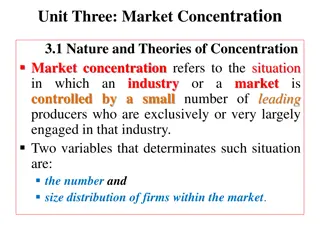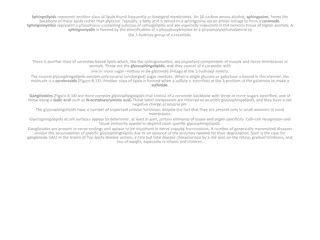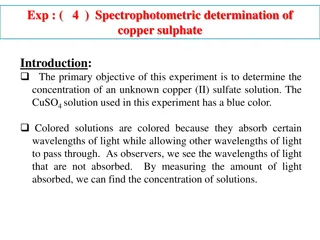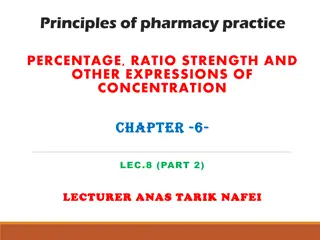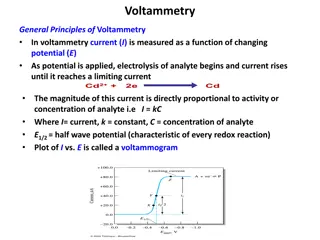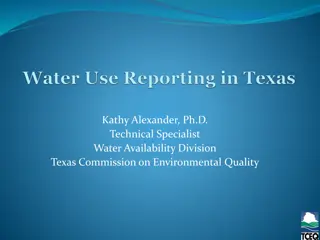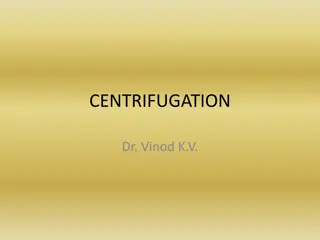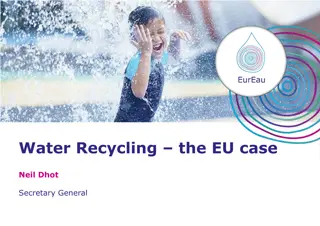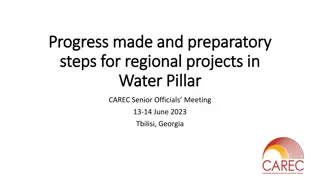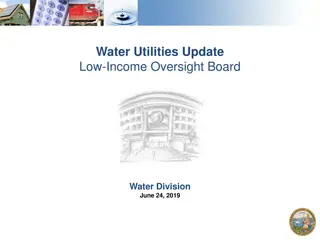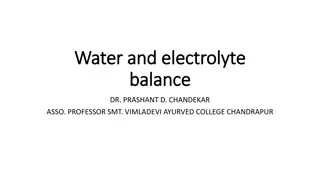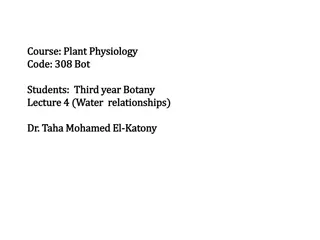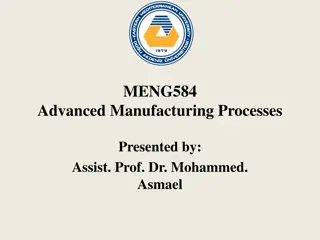Understanding Water Potential and Solute Concentration in Biological Systems
Explore the concept of water potential and solute concentration in cells through diagrams and equations. Learn about hypertonic, hypotonic, and isotonic solutions, and how water movement is affected by solute concentration differences. Discover how adding solutes affects water potential and the direction of water flow in biological systems.
Download Presentation

Please find below an Image/Link to download the presentation.
The content on the website is provided AS IS for your information and personal use only. It may not be sold, licensed, or shared on other websites without obtaining consent from the author. Download presentation by click this link. If you encounter any issues during the download, it is possible that the publisher has removed the file from their server.
E N D
Presentation Transcript
http://www.neosci.com/demos/10-1041_cell%20processes/Presentation%20Images/tutorials/3.01.jpghttp://www.neosci.com/demos/10-1041_cell%20processes/Presentation%20Images/tutorials/3.01.jpg WATER POTENTIAL Kelly Riedell Brookings Biology
SEARCH YOUR BIO BRAIN You learned about HYPERTONIC, HYPOTONIC, ISOTONIC solutions and how water will move as a result of differences in solute concentration Dots in the diagrams below represent solute. This cell is sitting in a _____________ solution. SOLUTE SUCKS! Which direction will the water move?
Types of water potential problems you may see Comparing solutions in containers A B 0.2 M 0.4 M Comparing a cell with the solution outside Comparing solutions across a semi-permeable membrane in a U tube 0.5 M glucose 0 3 M starch 0.2 M glucose 0.2 M starch
Water potential is a way add some math to explain where and why water will move. Equations on AP Formula sheet: = pressure potential ( p) + solute potential ( s) s = - iCRT i = # of particles molecule makes in water glucose = 1 (no ionization) NaCl = 2 (makes 2 ions Na+ and Cl-) C = molar concentration R = pressure constant 0.0831 liter bar/mole K T = temperature in K = 273 + C
Solute potential (s) DISTILLED WATER has a s = 0 Adding solute lowers SOLUTE POTENTIAL (ALSO CALLED OSMOTIC POTENTIAL) Makes it more ___________ Since = ( p) + ( s) Overall WATER POTENTIAL decreases too Water = more likely to flow toward areas with low water potential
Solute potential (s) = -iCRT Calculate the ( s) following for a solution of 0.2 M glucose at 20 C s = - i C R T s = = https://www.labsource.com/media/catalog/product/cache/1/small_image/250x/17f82f742ffe127f42dca9de82fb58b1/Kimble-Chase/kimble-chase-14000-10.jpg
Solute potential (s) = -iCRT Calculate the ( s) following for a solution of 0.5 M NaCl at 22 C s = - i C R T s = = https://www.labsource.com/media/catalog/product/cache/1/small_image/250x/17f82f742ffe127f42dca9de82fb58b1/Kimble-Chase/kimble-chase-14000-10.jpg
Images from: http://www.phschool.com/science/biology_place/labbench/lab1/watpot.html PRESSURE POTENTIAL p In open system (like beaker or cell in isotonic conditions) pressure potential p = O In closed system (like plant cell with rigid cell wall or a container with a plunger) p can be a positive or negative number, or zero.
SI UNITS 1 Bar = 1 Atm 1 Bar = 0.1 Megapascals (Mpa) http://www.neosci.com/demos/10-1041_cell%20processes/Presentation_4.html
= pressure potential (p) + solute potential (s) ) Calculate the following for an OPEN CONTAINER filled with PURE WATER ( p) = ______ ( s) = ______ ( s) + ( p) = = _________
Water moves from a region of HIGHER WATER POTENTIAL to a region of LOWER WATER POTENTIAL http://www.neosci.com/demos/10-1041_cell%20processes/Presentation%20Images/tutorials/3.01.jpg
http://www.cetbiology.com/biology-photographs/waterpotential.jpghttp://www.cetbiology.com/biology-photographs/waterpotential.jpg
= pressure potential (p) + solute potential (s) PLANT CELL Water moving into a plant cell puts pressure on the cell wall. INCREASING THE PRESSURE POTENTIAL ALSO INCREASES THE WATER POTENTIAL http://www.phschool.com/science/biology_place/labbench/lab1/watpot.html
The molar concentration of a sugar solution in an open beaker has been determined to be 0.3M. Calculate the solute potential at 22 degrees. Round your answer to the nearest hundredth. Now that you know the s you can calculate the water potential of this beaker of liquid. = pressure potential ( p) + solute potential ( s)
http://www.phschool.com/science/biology_place/labbench/lab1/quiz.htmlhttp://www.phschool.com/science/biology_place/labbench/lab1/quiz.html What is the water potential of the distilled water? What is the water potential of the beet core? Which way will water move?
http://www.phschool.com/science/biology_place/labbench/lab1/quiz.htmlhttp://www.phschool.com/science/biology_place/labbench/lab1/quiz.html


